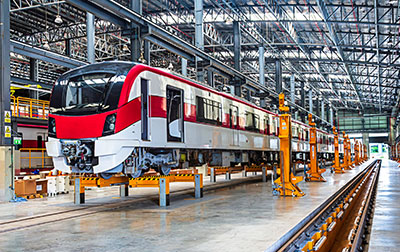Rail fleet checkups: The key to keeping transit on track
 They’re often conducted when fleets reach their midlife point to help determine whether overhauling upgrading or procuring new vehicles would be a better investment. At times, agencies also seek assessments to mitigate emergency situations such as structural cracks, corrosion, and various mechanical and electrical/electronic issues. No matter the reason, a multifaceted fleet assessment helps agencies accurately compare investment and risk strategies concerning repair or replacement decisions.
They’re often conducted when fleets reach their midlife point to help determine whether overhauling upgrading or procuring new vehicles would be a better investment. At times, agencies also seek assessments to mitigate emergency situations such as structural cracks, corrosion, and various mechanical and electrical/electronic issues. No matter the reason, a multifaceted fleet assessment helps agencies accurately compare investment and risk strategies concerning repair or replacement decisions.
These assessments include:
Condition evaluation: Assessments begin with a detailed review of maintenance records and inspections of the fleet, including locomotives. The process often identifies problems that are the result of larger issues. Maintenance facilities and stations are also inspected to assess the infrastructure needs related to the fleet or to accommodate replacement vehicles if needed.
Performance analysis: Evaluating the structural integrity, mechanical and electrical systems, system safety, and control systems can identify problem areas and influence life extension decisions based on cost and impact to the operation. Additionally, this data can guide the specifications for new rail vehicles to avoid past issues and enhance overall performance.
Cost-benefit analysis: Fleet assessments include a comparison of the costs to maintain older rail vehicles versus procuring new ones incorporating new technologies and improved maintenance support documentation and systems (warranties). This analysis supports informed decision-making and efficient use of rolling stock assets.
Strategic planning: These findings guide long-term plans. By documenting the history of previous overhauls and upgrades, and assessing the current maintenance practices, agencies can ensure that overhauls or new procurements align with future service goals and technological advancements.
Future opportunities
Fleet assessments are often the catalyst for positive change. If, for example, a fleet assessment determines that vehicles need to be replaced or upgraded, an agency could use the opportunity to address a variety of options, including but not limited to:
- Developing more secure networks to thwart cybersecurity threats that can result in ransomware and malware attacks
- Adding security measures such as surveillance systems
- Establishing protocols for the secure storage of passenger e-bikes, e-scooters and other micromobility modes of transit that use lithium-ion batteries, which can pose special fire risks if not handled properly
- Implementing new technologies such as adaptive LED lighting
- Improving reliability and mean distance between failures (MDBF)
Experience makes the difference
Rail systems are complex. When fleet assessments are needed, they require specialists who understand the nuances of vehicles and transit operations. At Hatch, we have a deep bench of unparalleled industry-leading experts who bring decades of global experience to every project, providing customized solutions while anticipating future challenges.
Thorough and in-depth fleet assessments can increase safety and revenue service availability. Furthermore, they offer ancillary opportunities to upgrade aspects of the fleet that are not directly related to the assessment, thereby enhancing overall operations and performance.
Whether improving existing fleets or preparing for new procurements, our exceptional staff ensures every solution is both innovative and effective. Together, we can create smarter, stronger, and more sustainable transit systems for tomorrow.
